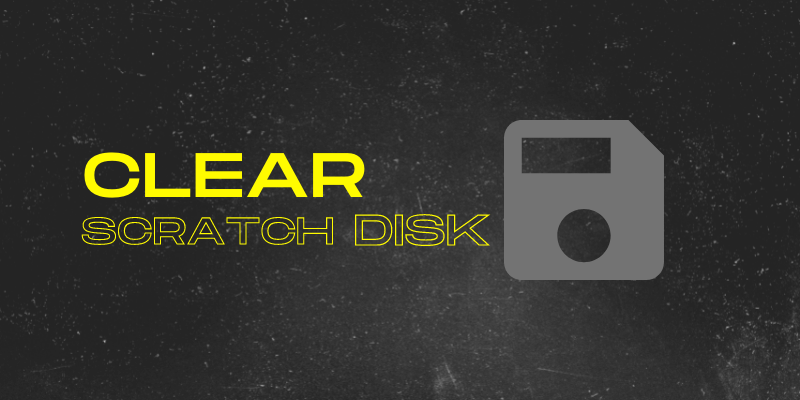When most of us are using Photoshop, we want to focus on our projects and not on the technical side of things – but there are some times when it’s unavoidable.
If you’re getting scratch disk errors or scratch disk is full when loading or using Photoshop, here’s how you can clear them up for good.
Many other websites use these scratch disk tutorials to push their own “cleaner” apps, but these are completely unnecessary and they can actually cause more problems than they solve.
The scratch disk is a Photoshop construction, and you can maintain it yourself without needing any additional software – as long as you know where to look. That’s where I come in!
As you might have seen from my other bios around the site, I’m Thomas Boldt, one of the image editors and writers on the PhotoshopBuzz team.
I’ve been working in the world of digital imagery for over 15 years, but I also love the technical, and hardware side of computing. I’ve already solved my own technical Photoshop issues, so I can help you save some time.
With the introductions out of the way, let’s dive right into problem-solving! Afterward, I’ll explain a bit more about how the scratch disk system works for those of you who want to prevent the problem from happening again.
Table of Contents
Clearing Your “Photoshop Scratch Disk is Full” Errors
There are several things you can do to clear your Photoshop scratch disk errors, depending on your situation. This process is almost identical in the Mac and PC versions of Photoshop, at least in general principles, but I’ll show you the steps for both operating systems.
1. Free up space on your system disk
By default, Photoshop uses the disk drive containing your computer’s operating system as its scratch disk. Adobe recommends having a minimum of 20GB of free space on your operating system disk for Photoshop’s usage, and it’s usually a good idea to have more than the minimum to ensure that everything goes smoothly.
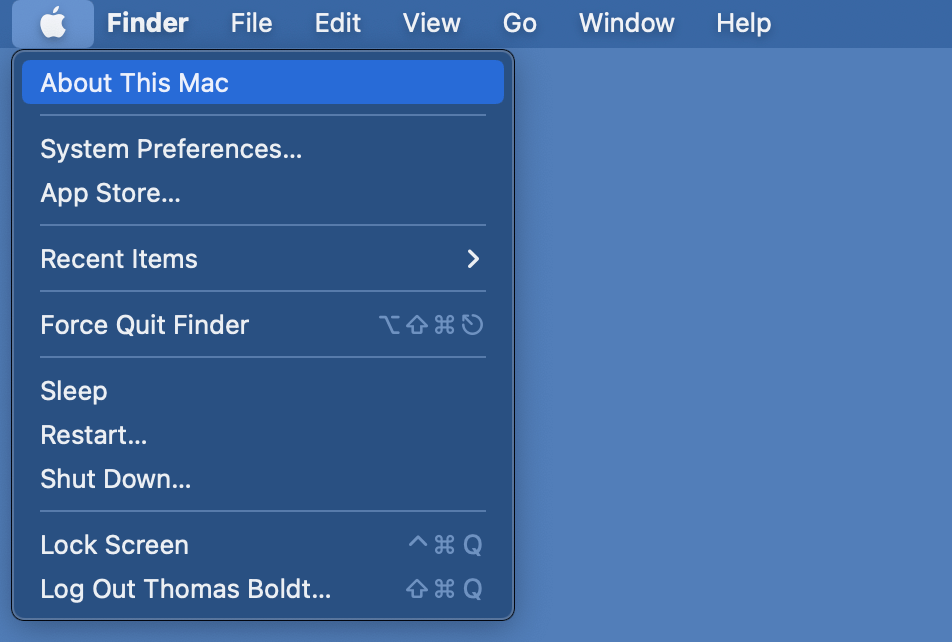
To free up space on your Mac system disk, open the Apple menu and click About This Mac.
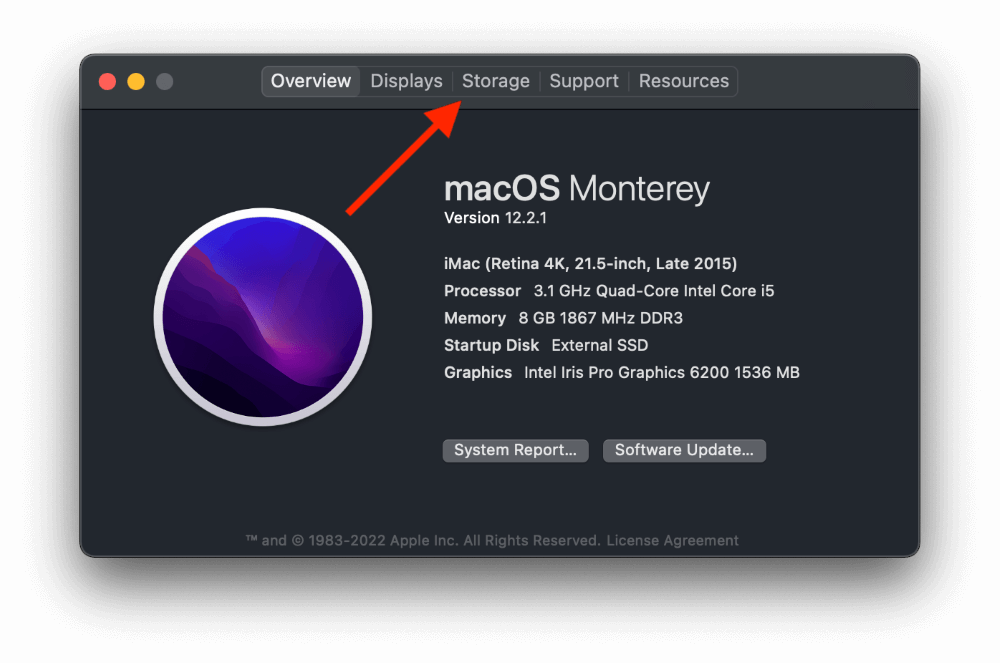
Click the Storage tab, and locate your system disk in the list. (In my example, I’m using an external SSD as my system disk, since my aging iMac originally came with a non-replaceable platter drive which is quite slow.)
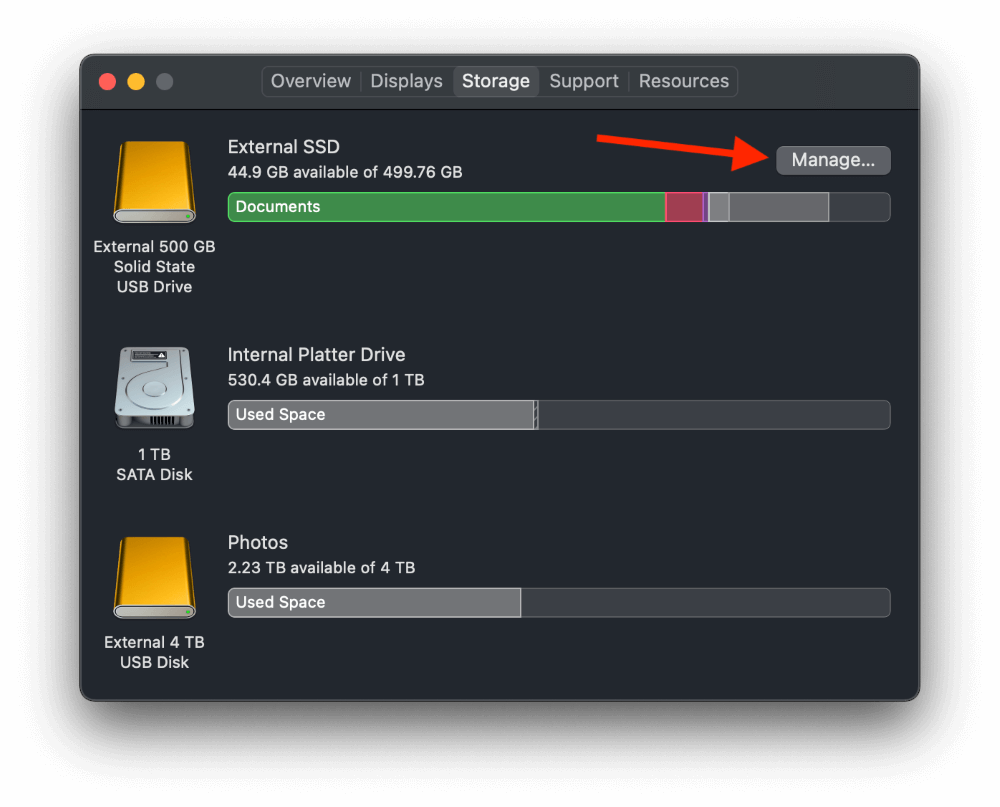
Click the Manage button, and you’ll see a breakdown of what’s using your storage space on that disk.
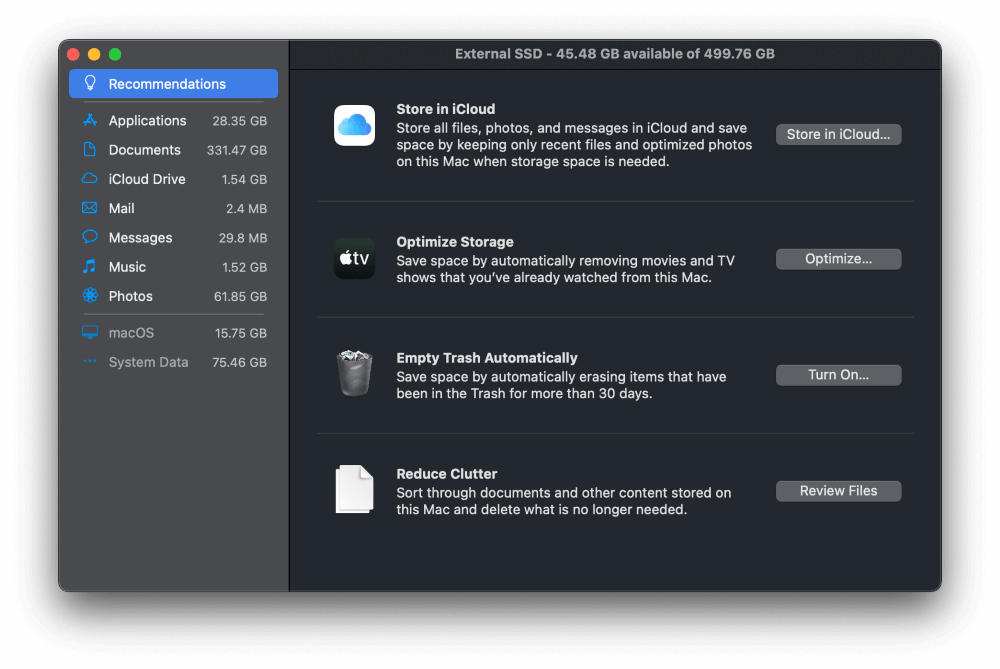
You can use the information to help you decide what to delete, or you can use the Recommendations section to follow Apple’s automatically generated suggestions.
The simplest method is to check your documents, music, and photos for large files that aren’t being used anymore, and uninstall any old apps that you’re not using anymore.
Just while taking the screenshots for this article, I found an unused 100 GB file made up of image previews from an old Lightroom Classic CC catalog, which was taking up over 20% of my system disk all by itself – oops!
To free up space on a Windows 10 system drive, open the Start menu and click the Settings icon.
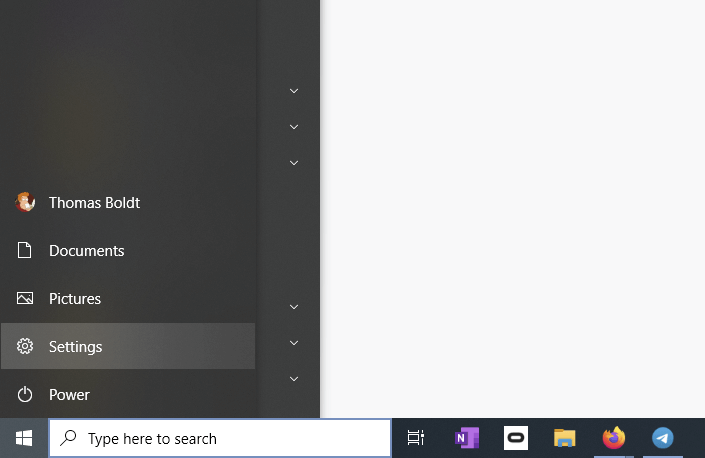
Click to open the System settings.
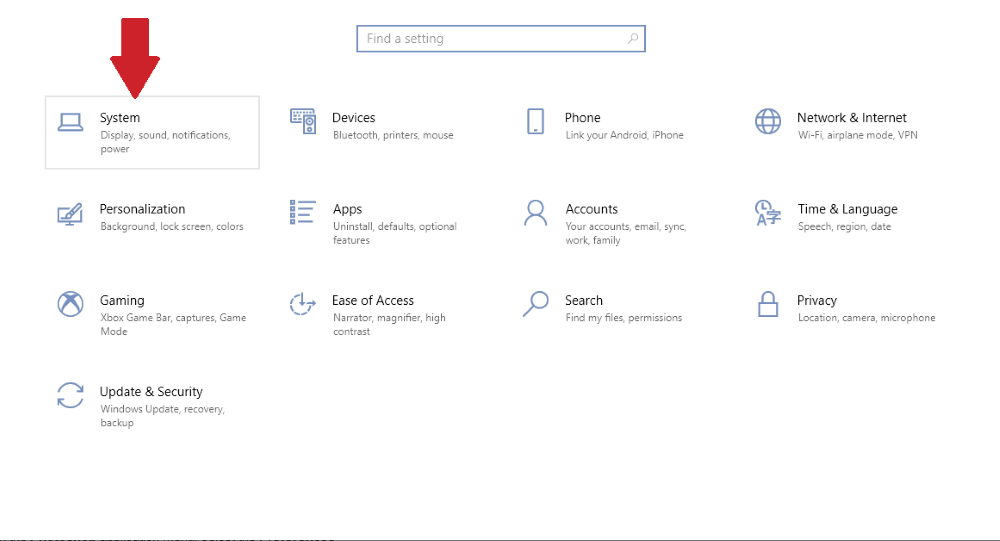
The System settings window opens, showing the Display section by default. In the left pane, click Storage.
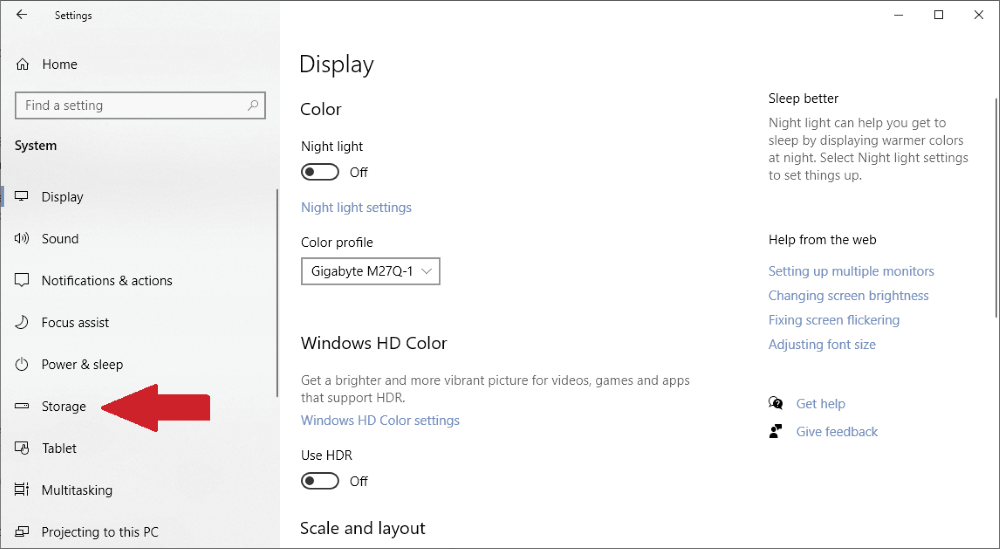
Windows will show you a breakdown of how your storage space is being used, which can help you figure out what to remove.
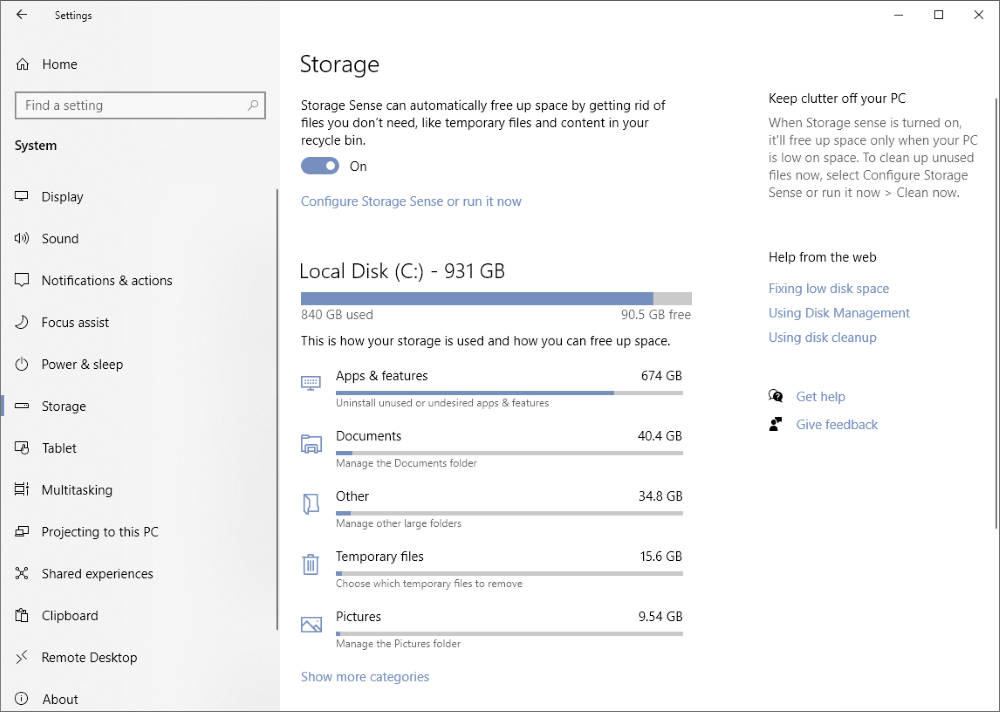
Click each entry in the list to visit each section and free up space – just make sure you don’t delete anything you still need by accident!
2. Set up additional scratch disks
If you can’t clear up enough space on your system drive to clear your “scratch disk is full” error, you can also use any additional drives that are installed in your computer as scratch disks.
Assuming that you’re able to load Photoshop, then you can open the Photoshop preferences window to configure additional drives.
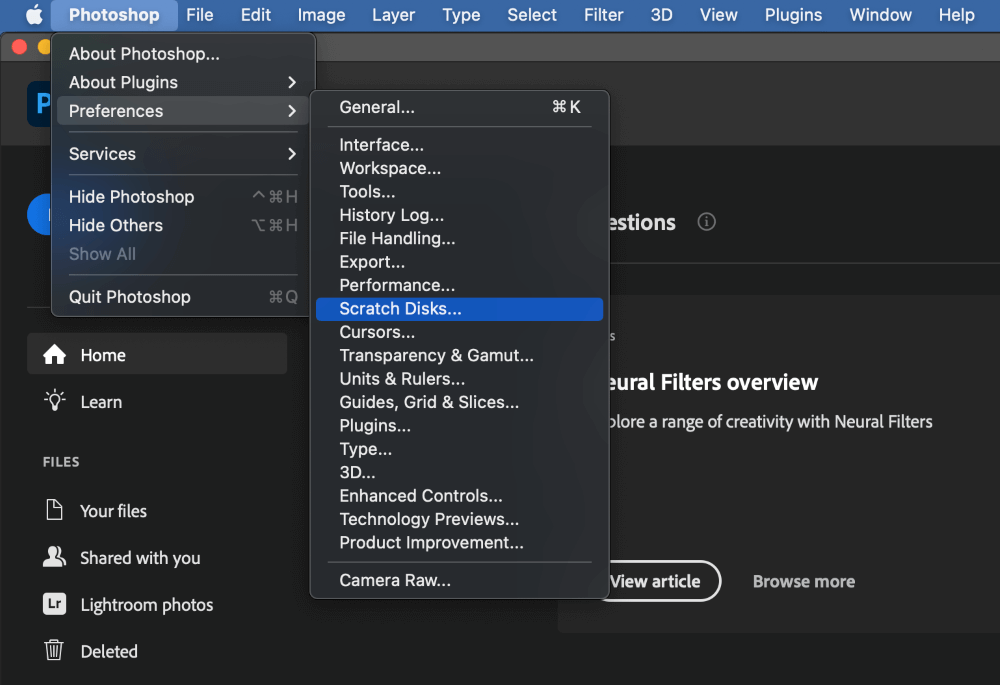
For Photoshop on a Mac, open the Photoshop application menu, select the Preferences submenu, and click Scratch Disks.
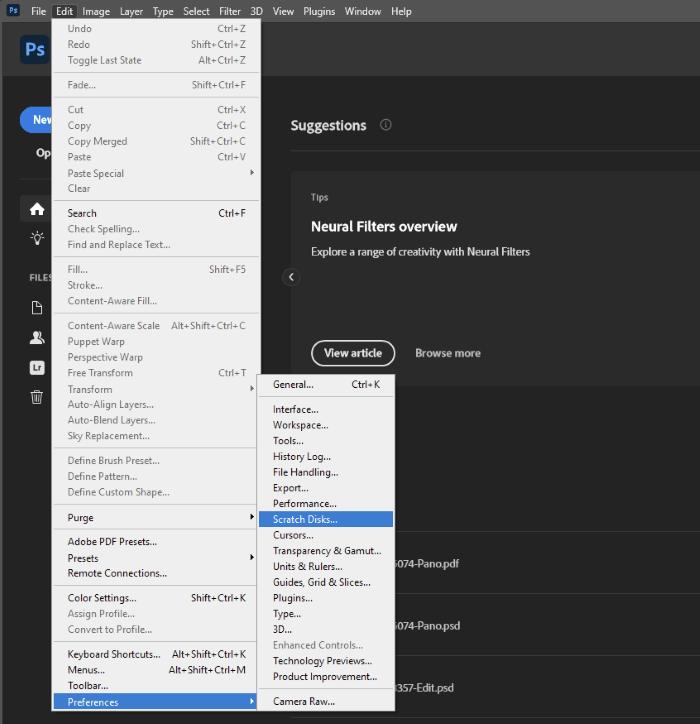
For Photoshop on a PC, open the Edit menu, select the Preferences submenu, and click Scratch Disks.
From this point on, the instructions are the same for both Mac and PC, and the Preferences window looks almost identical. I’ll be using the Mac screenshots for the rest of this section, but you should be able to follow along easily on PC.

Photoshop will provide you with a list of all the disks connected to your computer. Simply check the box beside each disk that you want Photoshop to use. In this example, I wouldn’t use either of my additional drives, since they’re quite slow and I’ve got enough free space on my SSD to continue without issue.
If Photoshop won’t load at all because of a scratch disk error, there’s a keyboard shortcut you can use while Photoshop is loading to access your scratch disk configuration settings, as you can see in the screenshot above.
Close any error messages and make sure that Photoshop is not still running. Hold down the Command + Option buttons (use Ctrl + Alt if you’re on a PC), and use your mouse to launch Photoshop.
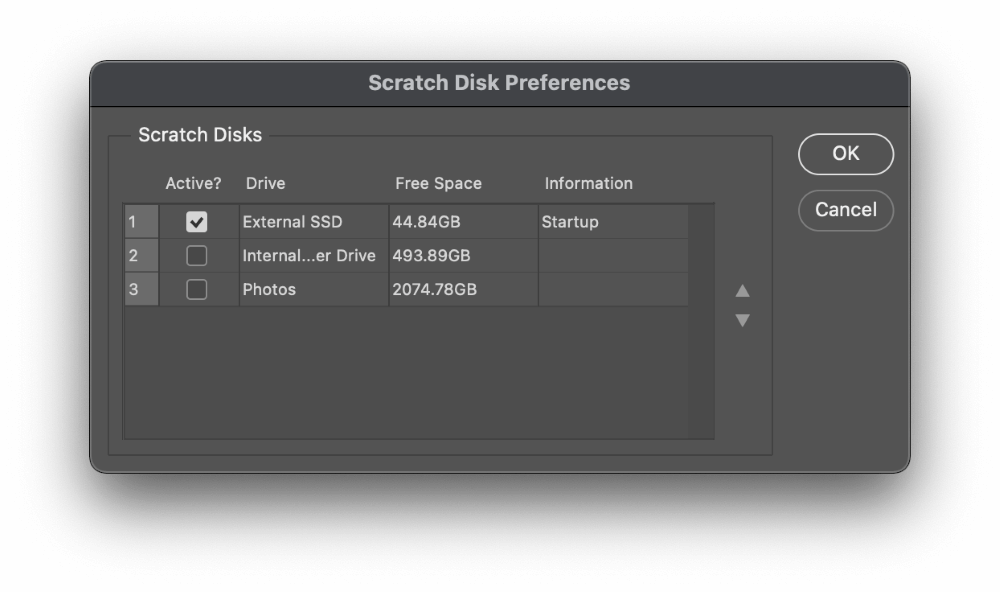
Photoshop will begin loading, but it will pause to prompt you about which scratch disks should be used. Make any adjustments that you need using the checkboxes beside each disk entry, and click OK.
Assuming that you’ve chosen a disk with enough free space available, Photoshop should load without any issues.
To make sure you get optimum performance from your scratch disk, set Photoshop to use the fastest drives you have with the largest amount of free space. This can have a huge impact on Photoshop’s loading and editing speeds, so don’t ignore it!
Solid-state drives are the best option available, especially the latest super-fast NVMe drives which can read and write at up to a gigabyte per second.
Avoid using an old-style mechanical platter drive unless you have absolutely no other choice since they’re limited to much slower read and write speeds.
3. Reset your Photoshop preferences
If you’re sure that you’ve got lots of free disk space for your scratch disk but Photoshop is still giving you a scratch disk full error message, then it’s possible that your Photoshop preferences have been corrupted.
To reset your Photoshop preferences, you can use a keyboard shortcut during the Photoshop launch process.
Make sure that Photoshop isn’t running. Hold down the Command + Option + Shift keys, and use your mouse to launch Photoshop. If you’re using Photoshop on a PC, use the Ctrl + Alt + Shift keys instead.
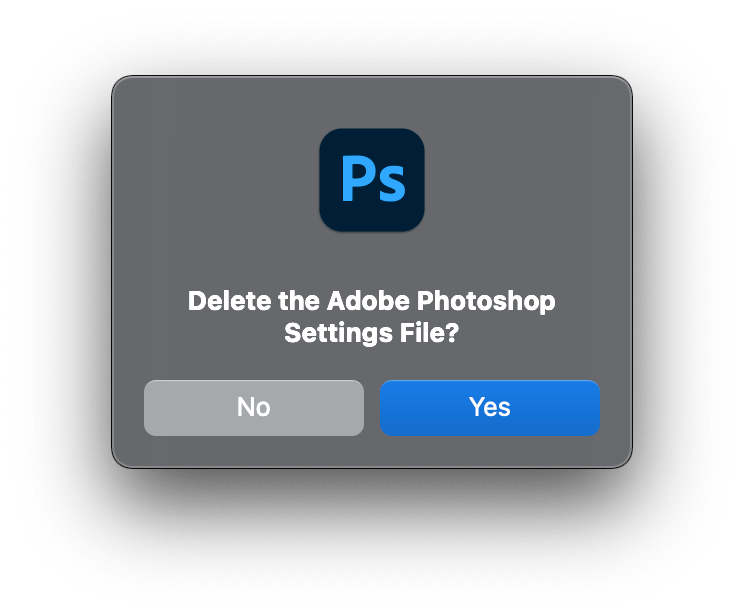
Photoshop will begin to load but it will pause immediately to ask if you want to delete the Adobe Photoshop Settings File. Click Yes, and Photoshop will delete the file and immediately create a new one using the default Photoshop preferences.
If you’re able to load Photoshop, you can reset your preferences using the Preferences panel. Open it using the menus or press the keyboard shortcut Command + K (use Ctrl + K if you’re on a PC).
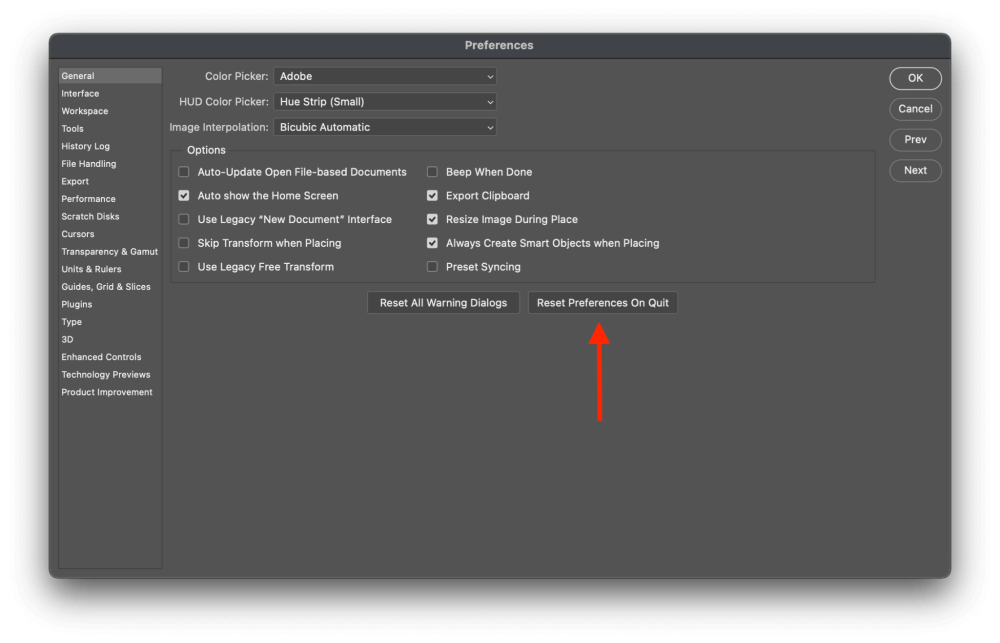
Click the Reset Preferences On Quit button (shown above), and Photoshop will ask you to confirm that you want to reset your preferences.
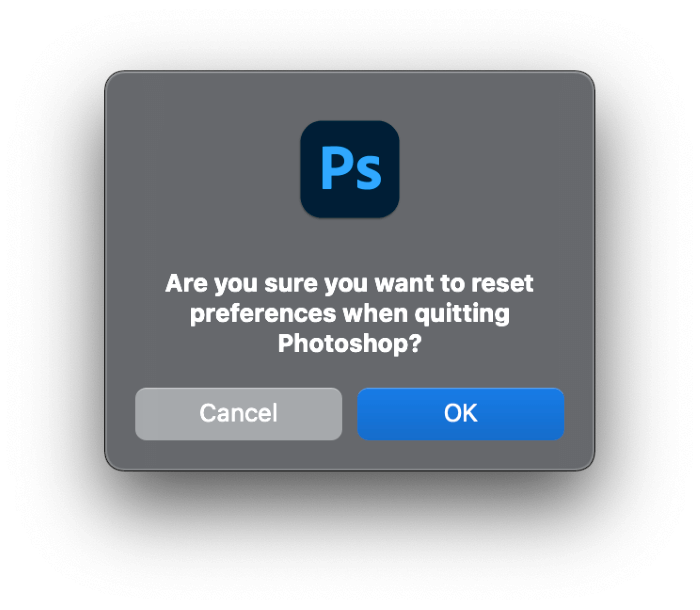
Click OK, and Photoshop will delete the preferences file and create a new one the next time you launch it.
This is a bit of a last resort since many image editors want Photoshop to be configured in a specialized personal way that can take some time to set up – but sometimes, it’s the only option.
What is the Photoshop Scratch Disk?
Now that you’ve gotten your error message cleared away and Photoshop is running normally again, you might want to take a second to learn more about how the scratch disk works.
The concept is actually pretty simple: Photoshop needs space to store temporary data about your open documents such as history states, and this temporary data can quickly become larger than your computer’s available memory.
To overcome this problem, Photoshop creates a temporary file on your disk drive to hold all this data. If you work on large files with multiple layers, lots of smart objects, and/or lots of history states, the Photoshop scratch disk can use a very large amount of space.
What Causes the Photoshop “Scratch Disk is Full” Error?
This might come as a shock: it’s because the storage drive that Photoshop is using as a scratch disk is full!
The temporary scratch disk files created by Photoshop usually only get deleted when the program exits properly. If Photoshop exits unexpectedly due to an error, or a power outage, or if you use a force quit command, the “clear temporary files” process might not actually happen, which can leave you with huge leftover temporary files that can fill up your disk.
Additionally, many computers have limited storage space, and this can quickly get filled with apps, photos, music, videos, and other documents. If your computer is running out of free storage space, Photoshop might decide that it doesn’t have enough space for its scratch disk.
Defragmenting Your Drive
Many Photoshop tutorials recommend defragmenting your storage drive to fix scratch disk errors, but this is largely outdated advice.
Older operating systems used to be very clumsy about the way they stored files, and over time this could lead to a single file becoming “fragmented” into many different physical locations on a storage drive.
During the days of mechanical platter storage drives, this caused big slowdowns when accessing fragmented files, because the drive actually moved a mechanical arm to read different parts of the disk.
Most modern computers use solid-state drives now, and the fragmentation problem is much less of an issue.
Macs are almost immune to the fragmentation issue from the start, and modern versions of Windows have automatic defragmentation tools that keep the issue in check without needing you to do anything at all.
A Final Word
That was quite a technical journey, but I hope you’ve got a much better understanding of the Photoshop scratch disk now. Scratch disks are a key part of Photoshop’s performance, so you’ve learned a valuable skill that will help you focus on your creative vision instead of waiting around for Photoshop to chug away slowly on your edits.
Happy editing!
About Thomas Boldt